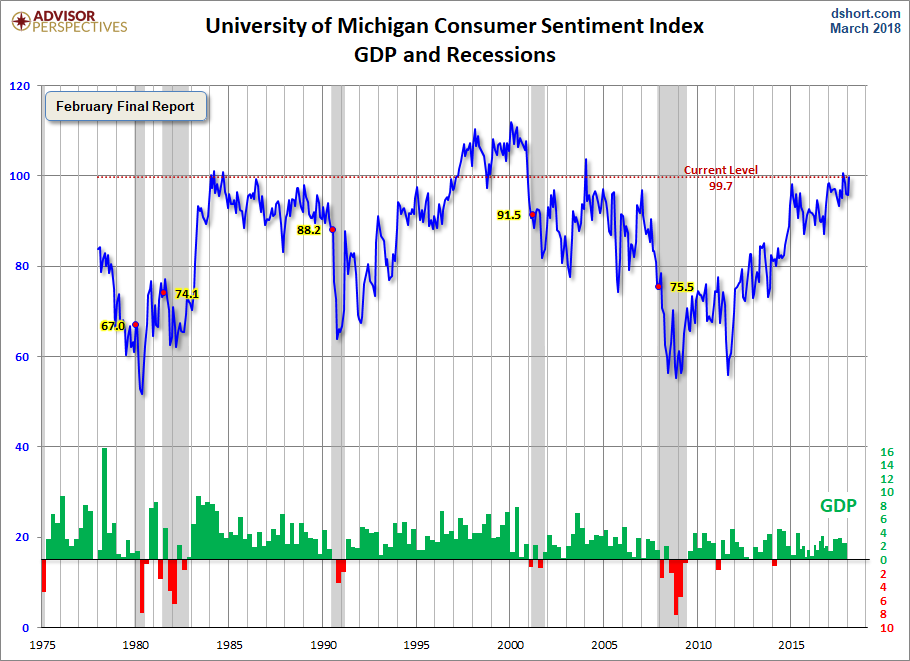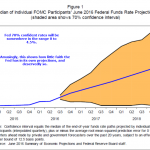The University of Michigan Final Consumer Sentiment for February came in at 99.7, up 4.0 from the January Final reading of 95.7. Investing.com had forecast 99.5.
Surveys of Consumers chief economist, Richard Curtin, makes the following comments:
Consumer sentiment remained quite favorable in February, at its second highest level since 2004. Consumers based their optimism on favorable assessments of jobs, wages, and higher after-tax pay. The highest proportion of households since 1998 reported that their finances had improved compared with a year ago and anticipated continued gains during the year ahead. Economic news heard by consumers continued to be dominated by the tax reform legislation and net job gains, which was untarnished by the consensus view that interest rates would increase and stock prices would remain volatile. Although rising interest rates was seen as a reason to temper their longer term outlook for the overall economy, only a modest moderation in the pace of economic growth was anticipated. Although consumers expected the unemployment rate to dip below 4% in 2018, only modest wage growth was anticipated, and inflation expectations have remained unchanged. Interest rates, even when pushed higher in the weeks and months ahead, will not cause postponement of discretionary purchases as long as income continues to rise near its present pace. Personal tax cuts are crucial to spur additional spending, but unlike prior cuts that had an immediate positive impact, this tax cut has not generated universal support across partisan lines. Overall, the data signal an expected gain of 2.9% in real personal consumption expenditures during 2018. [More…]
See the chart below for a long-term perspective on this widely watched indicator. Recessions and real GDP are included to help us evaluate the correlation between the Michigan Consumer Sentiment Index and the broader economy.

To put today’s report into the larger historical context since its beginning in 1978, consumer sentiment is 16.2 percent above the average reading (arithmetic mean) and 17.5 percent above the geometric mean. The current index level is at the 90th percentile of the 482 monthly data points in this series.













Leave A Comment